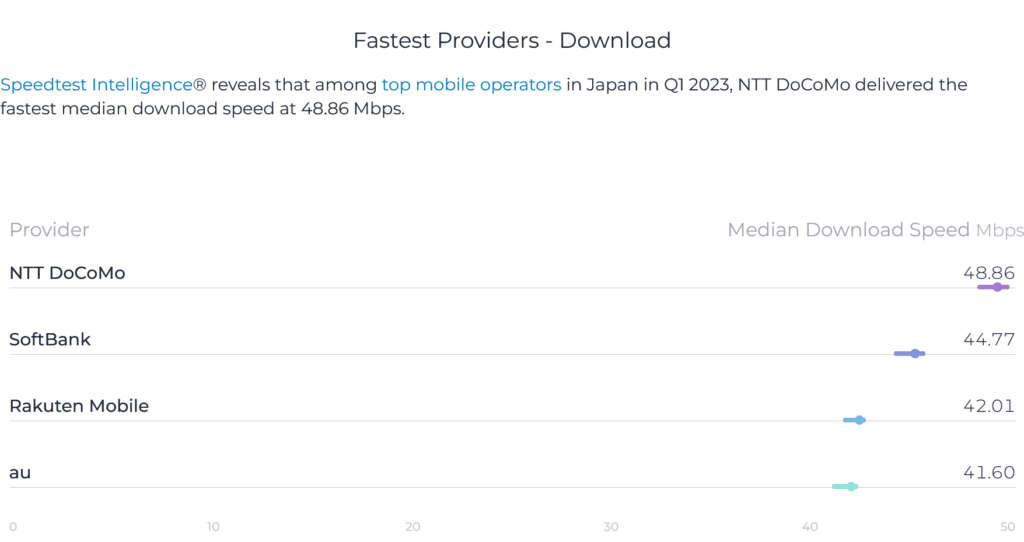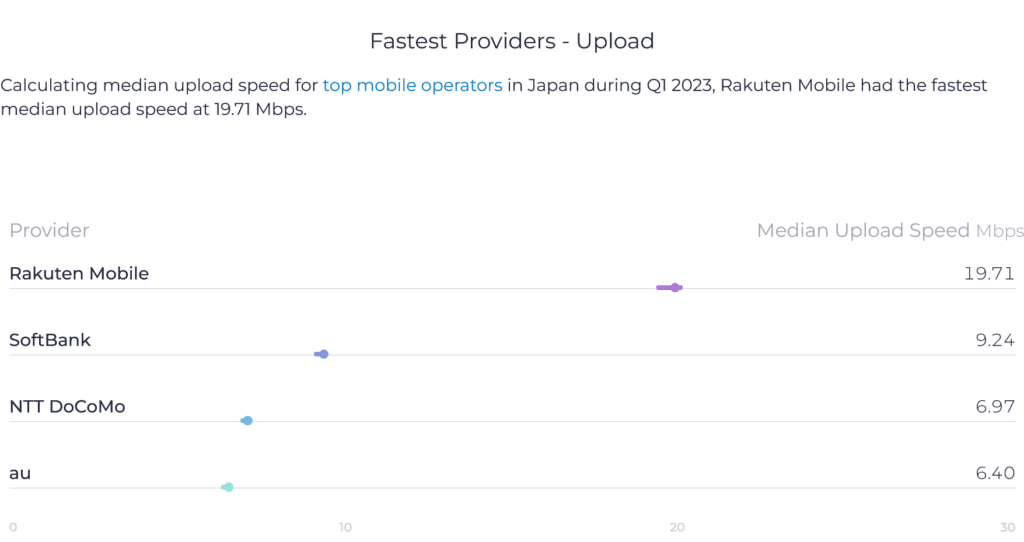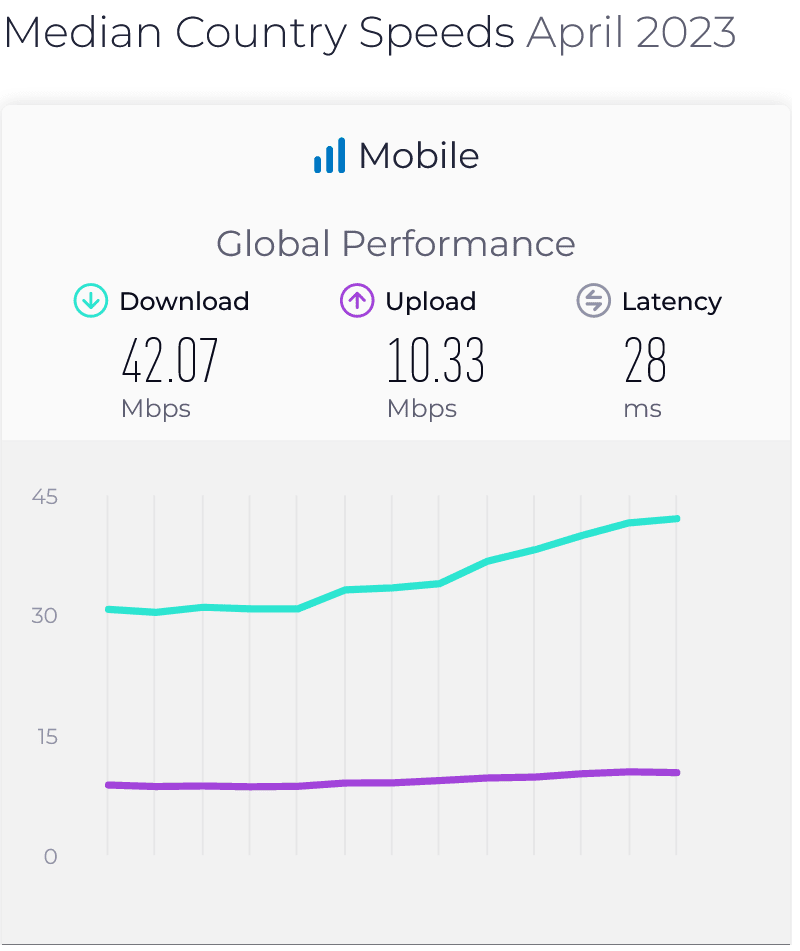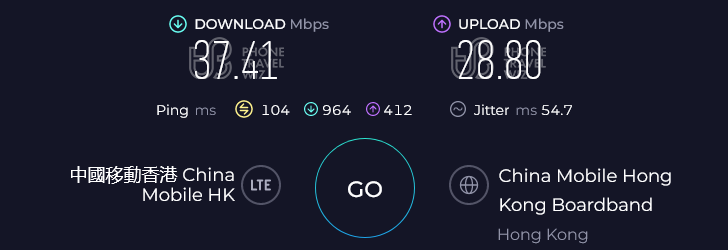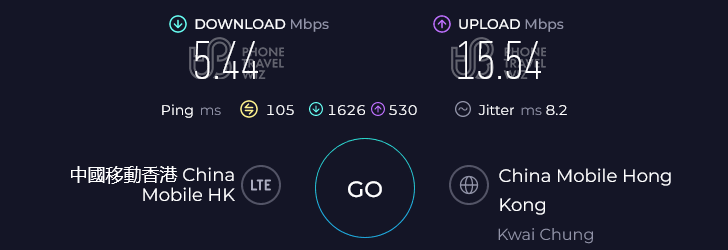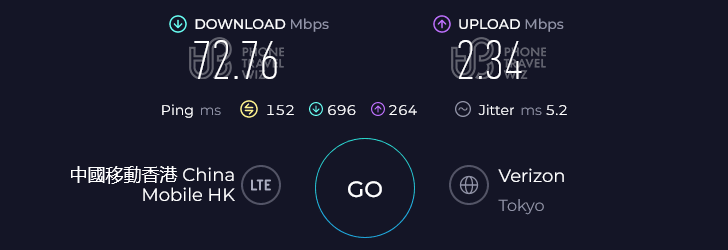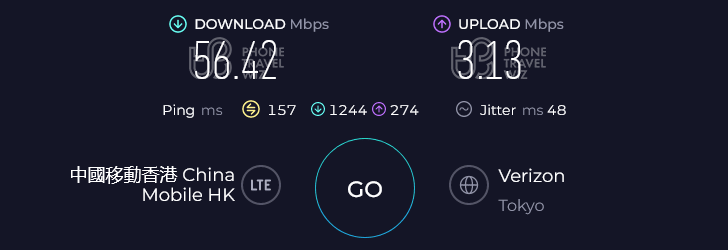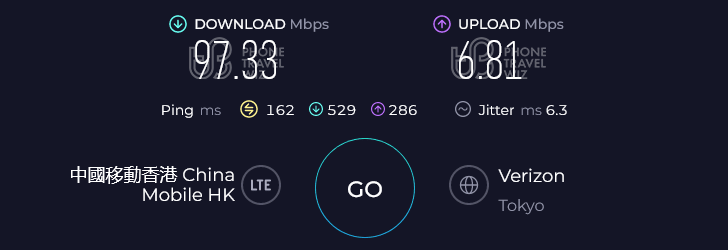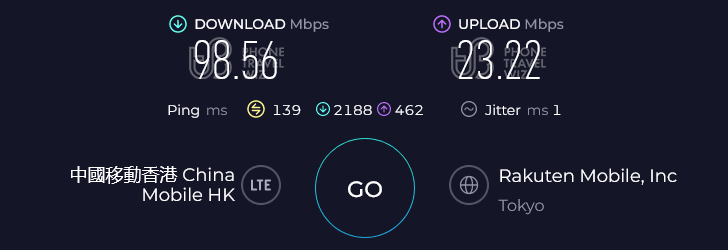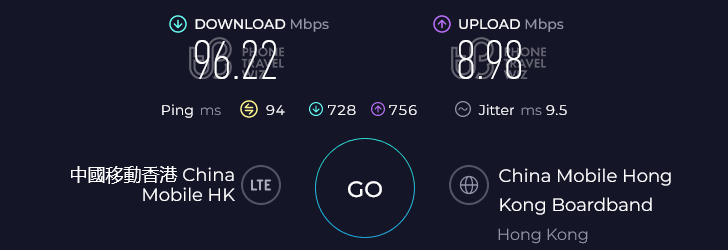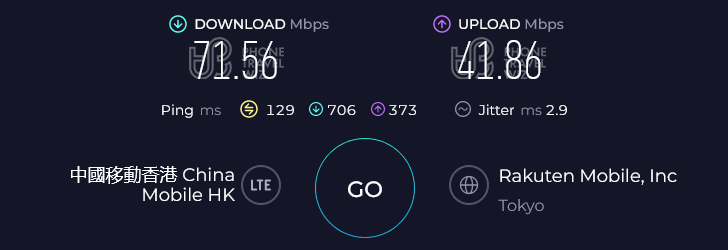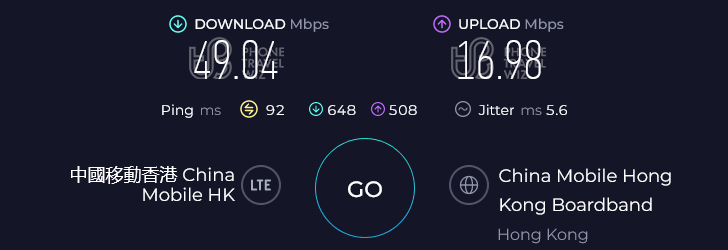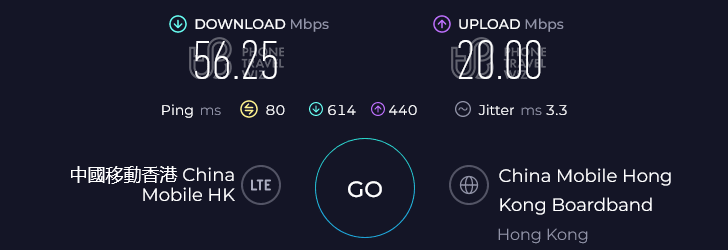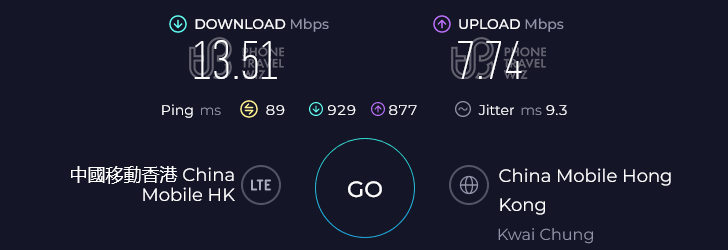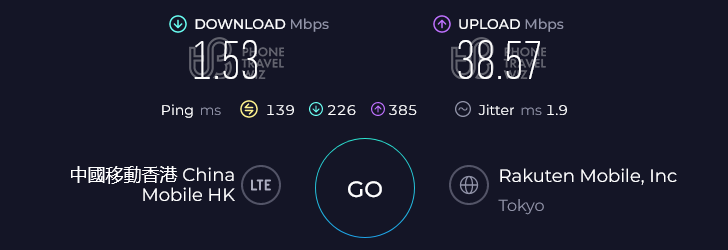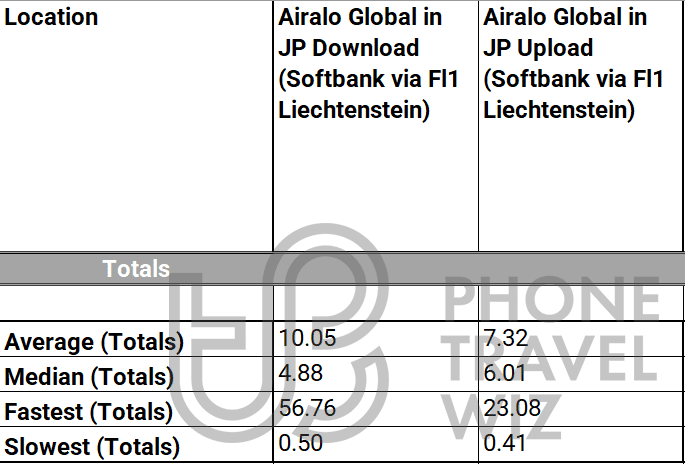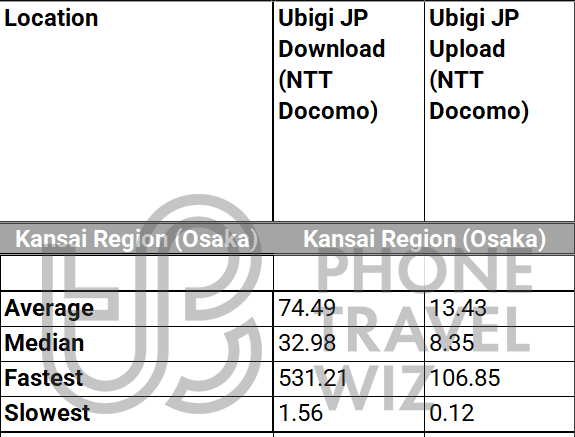The first time I visited Japan was in 2018 when I went together with a friend of mine – Ditmar.

It was a hectic summer, as I also visited China a few weeks before and the Netherlands three times (before, between & after those trips – I was living in Denmark back then).
What surprised me is that the Japanese government banned the sale of voice-enabled SIM cards to travelers in 2006 for some reason.
As a result, only data-only SIM cards are sold to visitors like you and me.
Because VoIP (Voice over IP) apps like WhatsApp were already popular back then, it did not bother us that we could not make phone calls.
Since then, a lot has changed – travel eSIMs exist, and they are incredibly popular.
And I love trying them out to see which performs the best in individual countries like Japan.
So I revisited in 2023 and stayed in the Kansai Region (mostly Osaka) and Tokyo (again).

This resulted in me spending more than 480 USD for my Japan SIM card and travel eSIM review series (50 030 JPY (≈ 360 USD) on Japanese SIM cards and 121.50 USD on travel eSIMs to be used in Japan) – yeah… I went all out for you 😎.
I am excluding the cost of Airalo's Asialink 100 GB eSIM (185 USD) and its Discover Global 20 GB eSIM (89 USD) because I use both in multiple countries, not just Japan.
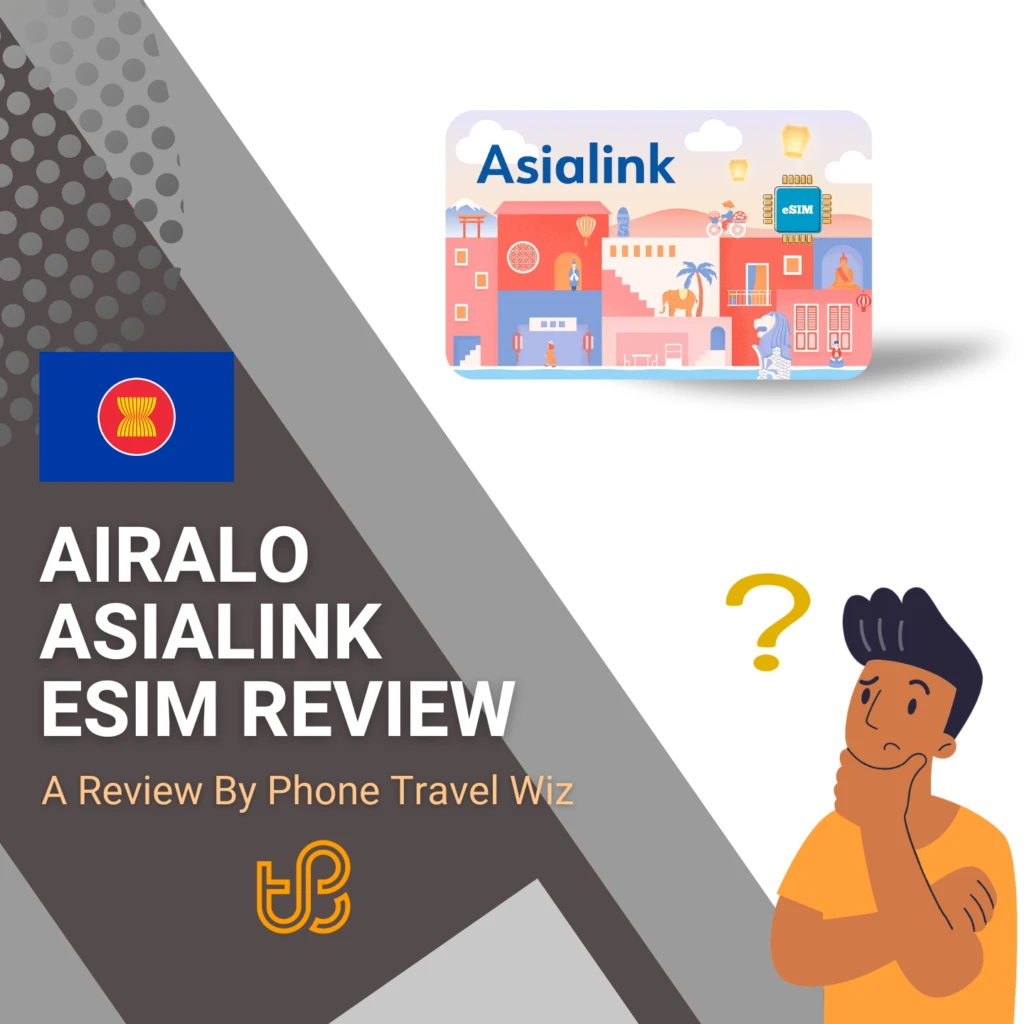
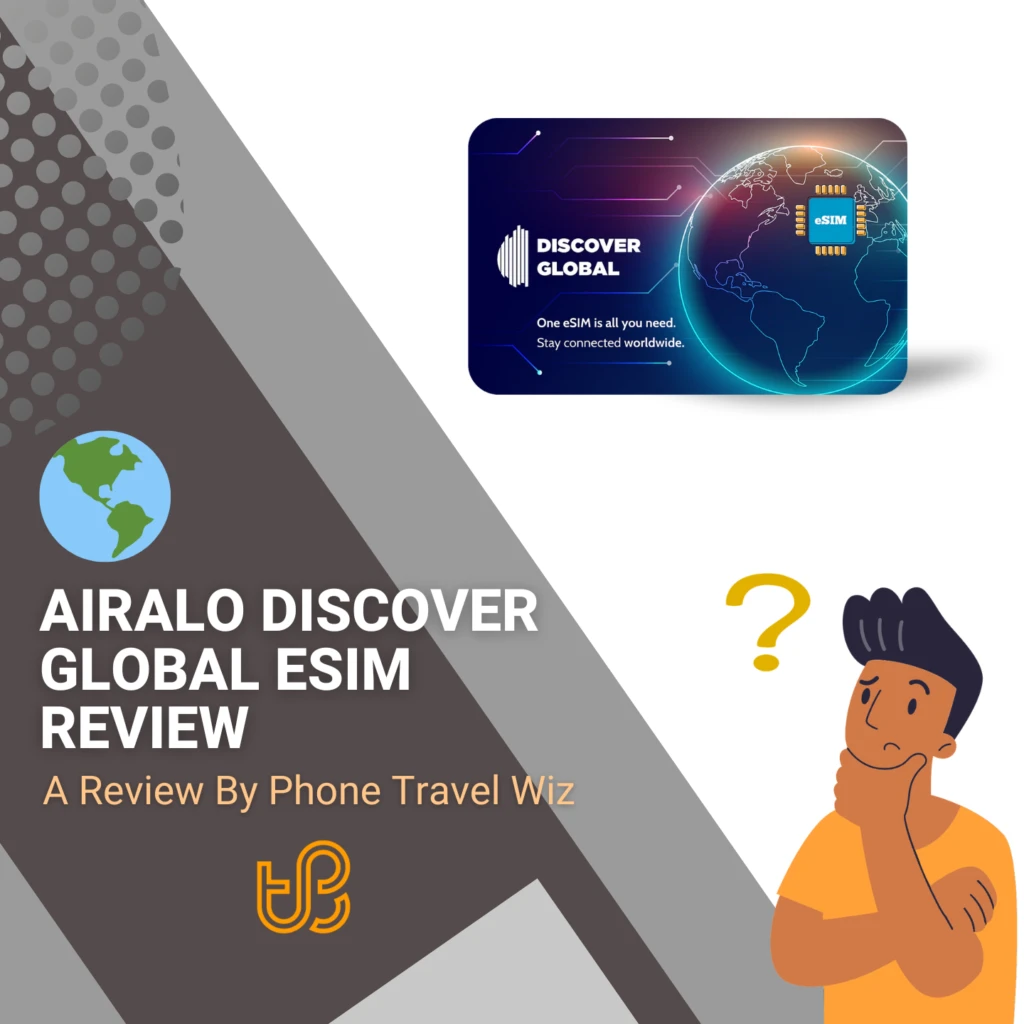
In many countries, getting a local SIM card will be the most cost-effective way to stay connected.
But that is not the case in Japan – they are criminally expensive.
Worse, almost all the Japanese SIM cards I tested had speed caps of 2 Mbps, 10 Mbps, or “unrestricted” speed for the first few days (often up to three days) before speeds would drop.
And I am talking about SIM cards that supposedly have no Fair Use Policy (FUP), and promise speeds up to 788 Mbps, or whose FUP I had not hit.
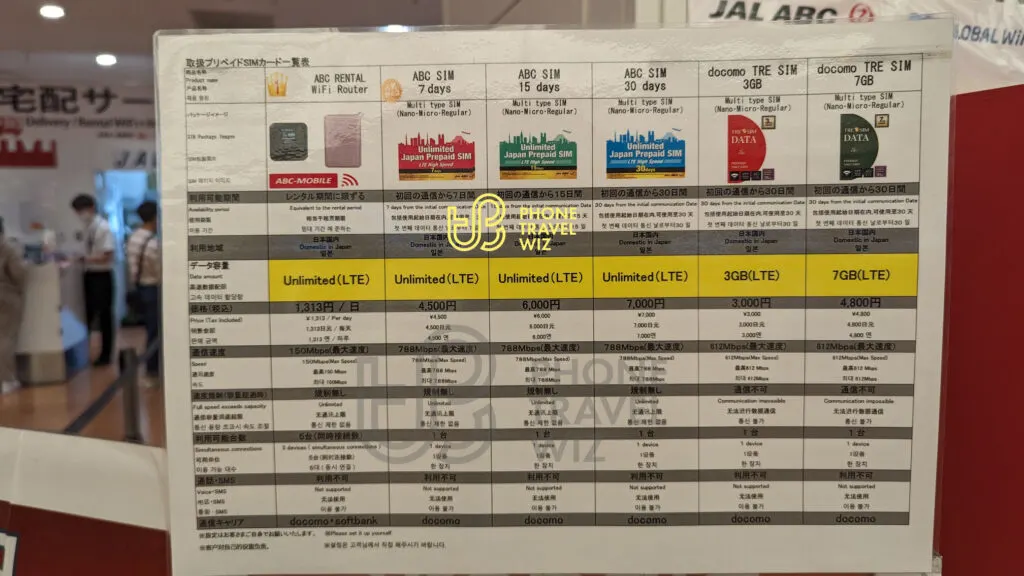
As a result, there is only one Japanese SIM card I recommend – but that one is expensive too.
Travel eSIM providers like Japan are way cheaper than Japanese SIM cards (although Holafly is not super cheap either).
Surprisingly, they performed significantly better – even when roaming on the local networks.
This phenomenon is uncommon but happens in countries where mobile operators throttle (prepaid) speeds.
Because the Holafly Japan eSIM can be cheaper than any Japanese SIM card available while having a better performance than them, I can already recommend it if your phone supports eSIM.
Throughout this review, you will discover why I think this way, so let's start immediately.
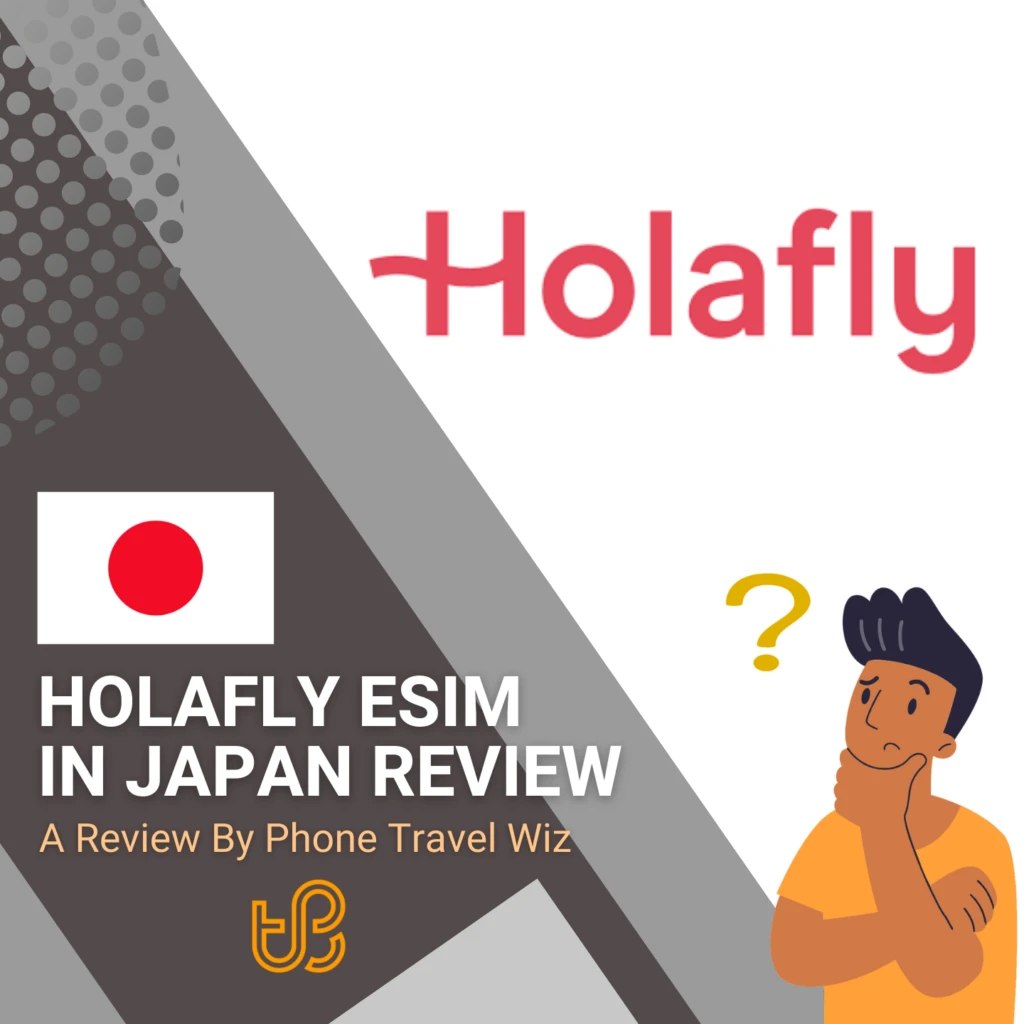
Original publication: 27th of May 2023. Last updated: 15th of January 2024.
Table of Contents
Which Phones are Compatible with Holafly eSIMs?
Before discussing the Holafly eSIM to be used in Japan specifically, you must know whether your phone can even support Holafly's eSIMs.
Sure, your phone may support eSIM, but the local mobile operator and travel eSIM provider, like Holafly, first needs to certify a phone before the users can use their products.
As of August 2023, the phones shown in the infographic below are compatible with Holafly eSIMs:

>>> Get your Holafly Japan eSIM and use code “PHONETRAVELWIZ” for 5% off! <<<
With that out of the way, let's talk more about the Holafly Japan eSIM!
How Much Does the Holafly Japan eSIM Cost?
You can get the Holafly eSIM to be used in Japan for as little as 19 USD (unlimited for five days) and up to 99 USD (unlimited for 90 days).
Wait… unlimited data!?
Yes, Holafly has been offering unlimited data plans since June 2022.
And Japan is one of the 45 countries (at the time of writing) where unlimited data plans are offered.
While unlimited often means “unlimited”, Holafly told me that its plans were truly limitless when it introduced its new plans.
A few weeks later, though, this paragraph was added to its “Can my connection speed be reduced?” FAQ:
[…] if the mobile operator estimates the usage of more than 90 GB of data in a month, it may temporarily reduce the speed to 256 Kbps – 1 Mbps to avoid affecting other users. This limitation is intended to prevent network saturation and will be removed within 24 hours.

One of Holafly's competitors (an eSIM reseller – not me, lol) tried to hit a daily fair-use limit, realizing that speeds get throttled after using more than 2.5 GB to 3 GB daily.
Do with this information as you wish 😏.
Below is an overview of how much each Holafly Japan eSIM costs:
- Japan unlimited data eSIM for 5 days, costing 19 USD
- Japan unlimited data eSIM for 7 days, costing 27 USD
- Japan unlimited data eSIM for 10 days, costing 34 USD – very popular with Phone Travel Wiz readers
- Japan unlimited data eSIM for 15 days, costing 47 USD – most popular with Phone Travel Wiz readers (this is the one I used during this trip)
- Japan unlimited data eSIM for 20 days, costing 54 USD – very popular with Phone Travel Wiz readers
- Japan unlimited data eSIM for 30 days, costing 64 USD
- Japan unlimited data eSIM for 60 days, costing 84 USD
- Japan unlimited data eSIM for 90 days, costing 99 USD
Note: Phone Travel Wiz reader popularity ranking was updated in September based on data up to the 7th of September (2023 data only).
>>> Get your Holafly Japan eSIM and use code “PHONETRAVELWIZ” for 5% off! <<<
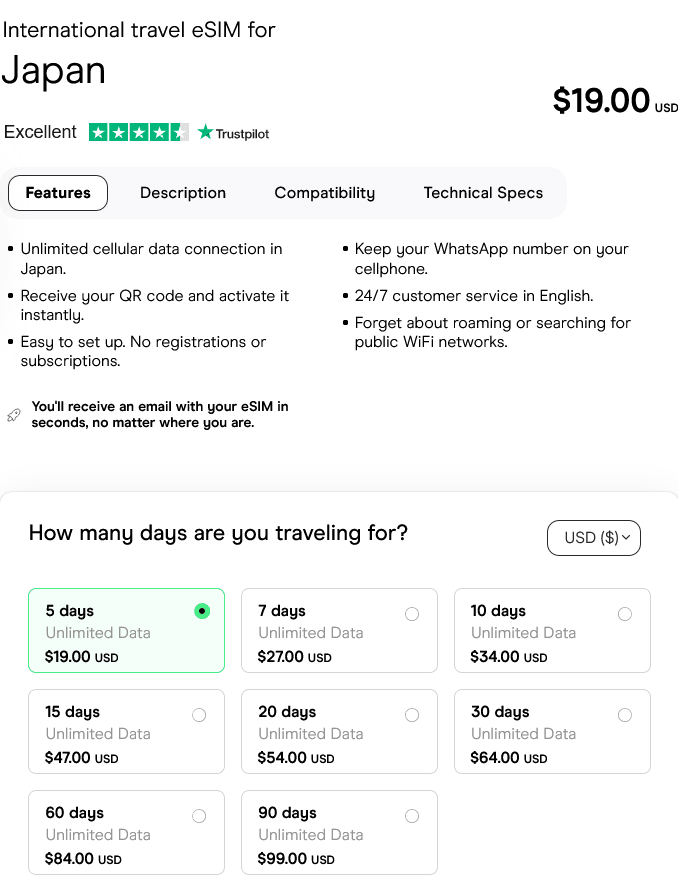
If your credit/debit card charges you foreign exchange fees, get yourself a Wise Borderless Account and Debit Card.
Their fees are MUCH lower than banks and credit card companies charge you (and Wise is transparent about their fees, unlike banks).
I have saved literal THOUSANDS of Australian Dollars and Euros, my main currencies, when using Wise abroad when traveling compared to my debit and credit cards.
Be aware that unlike some other eSIM providers, like Airalo, Nomad & Ubigi (which I all also tested in Japan), you cannot top-up or add extra data if needed (for the time being).
Holafly is planning on adding that feature soon, but it has been months (perhaps even a year already)… so do not keep your hopes up.
>>> Get your Holafly Japan eSIM and use code “PHONETRAVELWIZ” for 5% off! <<<
My Holafly eSIM in Japan Experience
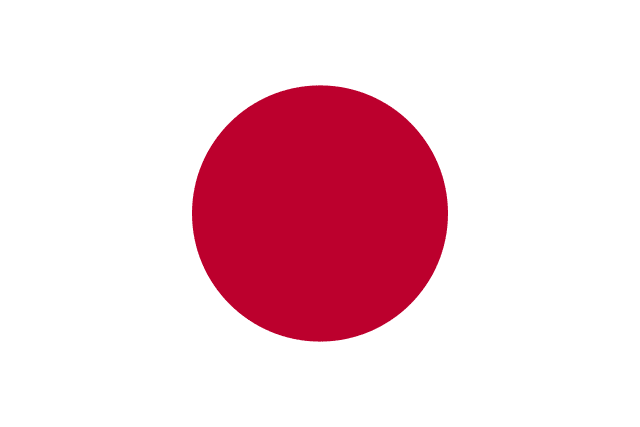
I used my Holafly Japan eSIM in Hiroshima, the Kansai region (mostly Osaka, but also Kobe, Kyoto & Nara) & Tokyo Metropolis (mostly Chiyoba City, but also Shinjuku City, Taito City & Yokohama City).

Before we continue, I do want to let you know how travel eSIM providers like Holafly work.
It is impossible for Holafly, or any other mobile operator, to operate in every country (and do not trust any company saying otherwise), so they set up roaming agreements.
And do not get worried by the word roaming yet – roaming can be expensive, but roaming with Holafly or many other travel eSIM providers, will not result in a 5000 USD roaming bill.
What Holafly does, and basically all (actual) mobile operators do, is partner up with a local mobile operator so that their customers can still stay connected when abroad.
In the case of Japan, the Holafly eSIM uses the AU by KDDI network with the help of China Mobile Hong Kong, also known as CMHK or CMLink (so your phone, some apps, or sites you visit may claim you are using a China Mobile Hong Kong eSIM instead of a Holafly one – that is correct).
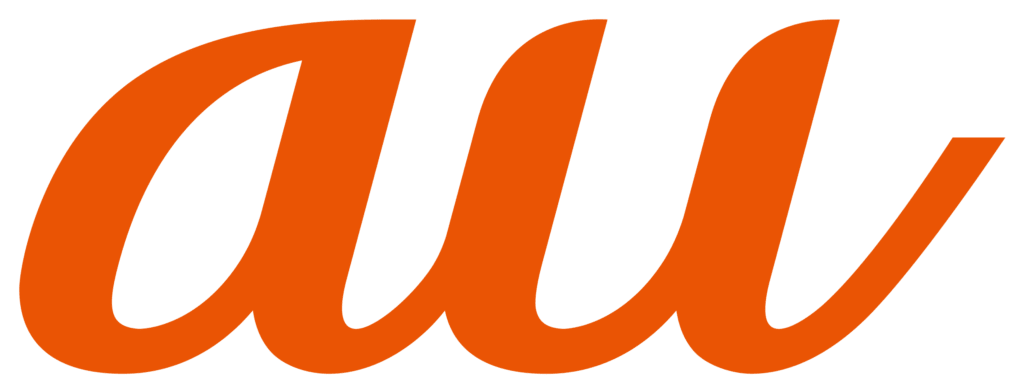
Note: in some countries, Holafly uses multiple local networks (which often applies to regional eSIMs, like the Holafly Asia eSIM).
The Japanese mobile operators are not in the prepaid business for whatever reason, so I mostly used Mobile Virtual Network Operators (MVNOs) using the NTT Docomo network through another MVNO called IIJmio.
All Japanese SIM cards I used using IIJmio were mostly/always throttled @ 2 Mbps, 10 Mbps, or would start off normally for the first (few) day(s) before being slowed as well.
I go more in-depth about that in my individual Japanese SIM card reviews, but all the travel eSIMs I used, including Holafly's Japan eSIM, were not affected by this nonsense… so that was amazing 🤣.
So while I usually compare my eSIM results with the local mobile operator, it is not something I can do in Japan consistently because all the SIM cards I tried were MVNOs 🥲.
But worry not – I will do my best, mostly because I tried nine travel eSIMs using the networks of the Big Three (NTT Docomo, Softbank & AU by KDDI) with varying results.
When looking at 4G/LTE availability in Japan, the three mobile operators cover practically all of the country, with an availability of at least 99.4%.
Rakuten Mobile exists in Japan too, but tourists cannot get its prepaid SIM cards. Moreover, none of the SIM cards or eSIMs I used were using its network, so I will ignore its results in this analysis.
Japan's 4G/LTE reception is so good that you will unlikely be stuck on 3G at any time.
Unless you did not turn off airplane mode while taking off to send a quick message… I know who you are 😏.
In terms of 5G NR, the Holafly eSIM did not support it when I was in Japan, so I will not go over that for now (but I will go back when it does support 5G NR, like the Ubigi eSIM on the NTT Docomo network).
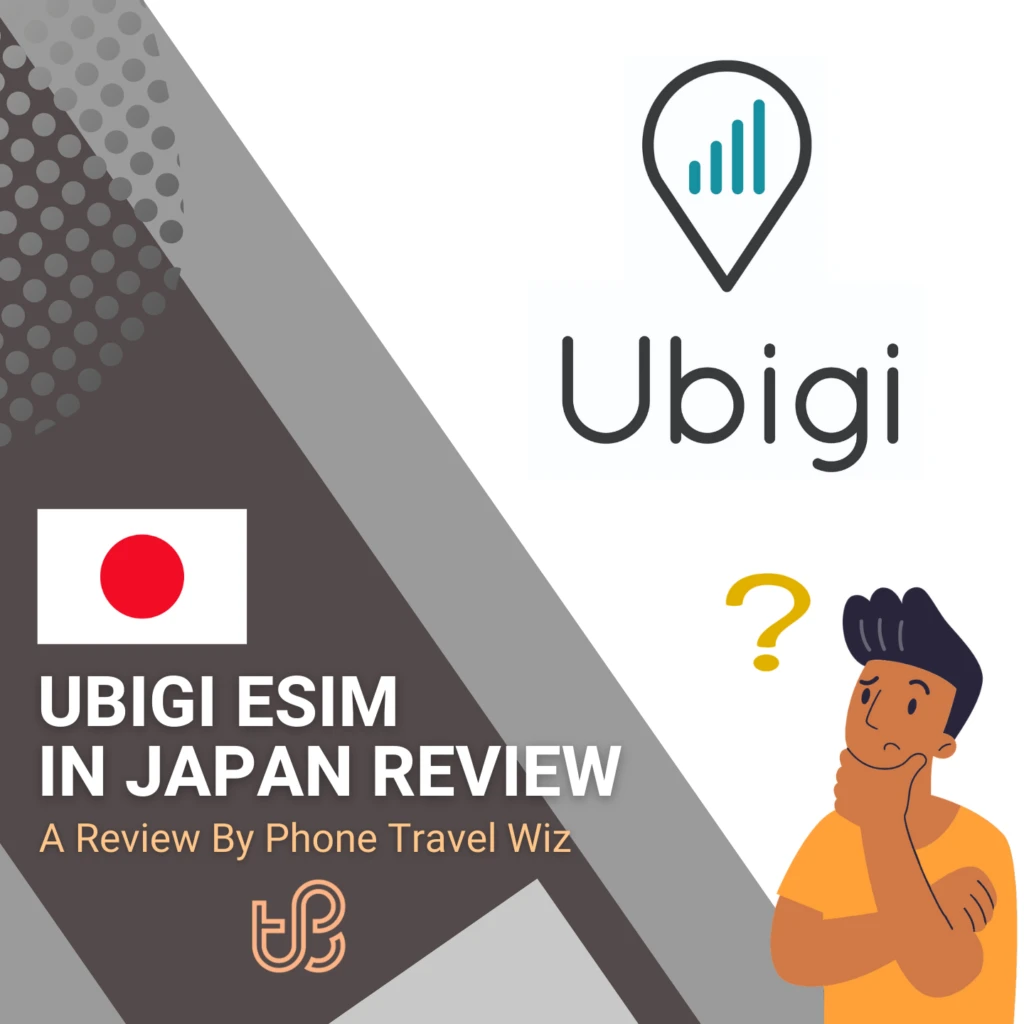
In terms of speed, NTT Docomo has the fastest download speed, with a median download speed of 48.86 Mbps, ahead of SoftBank (44.77 Mbps) and AU by KDDI (41.60 Mbps).
But these results are somewhat similar, so you can say they have roughly the same speed.
The same can be said about upload speeds, where SoftBank is leading the pack (9.24 Mbps), followed by NTT Docomo (6.97 Mbps) and AU by KDDI (6.40 Mbps).
I did speed tests with the Speedtest app in three regions throughout Japan.
For reference, I consider an average download speed of 25 Mbps and an average of 10 Mbps upload speed fast enough.
Preferably, download speeds should be 100 Mbps+ on 4G/LTE… but we are not there yet 🗿.
But why these averages?
A download speed of more than 25 Mbps is enough to video stream content @ 4k resolution.
Social media sites that allow for live streaming, like Facebook Live, recommend an upload speed of at least 10 Mbps.
So, that is why – but that does not mean that a download speed of less than 100 Mbps excited me 😏.
But Australia spoiled… everything slower than 300 Mbps is slow now 🤣.
Anyway, you will also see that some of the results are in two shades of red, green, underlined, or in italics.
Underlined results are on 5G NR, while results in italics are on 3G.
The green shows that the result was the fastest on the network at said location.
For example, the Airalo Moshi Moshi being the fastest travel eSIM on the SoftBank network in a mall.
While red shows that the result was the slowest on the network among its peers at the location.
Okay, that is enough background information – let's compare the Holafly Japan eSIM to other travel eSIMs primairly using the AU by KDDI network in Hiroshima, the Kansai region & Tokyo Metropolis.
Holafly Japan eSIM Speed Test Results in Hiroshima
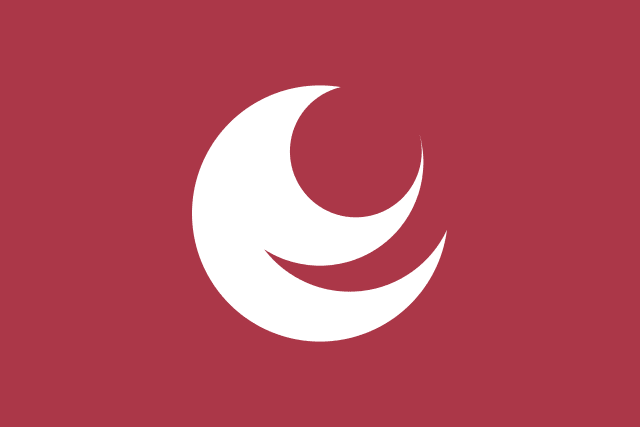
Hiroshima is mainly known for an incident that happened in 1945.
However, the radiation levels are so low nowadays that they are comparable to other Japanese cities – or most other cites worldwide.
Besides its history, it has much to offer, such as the Hiroshima Castle.
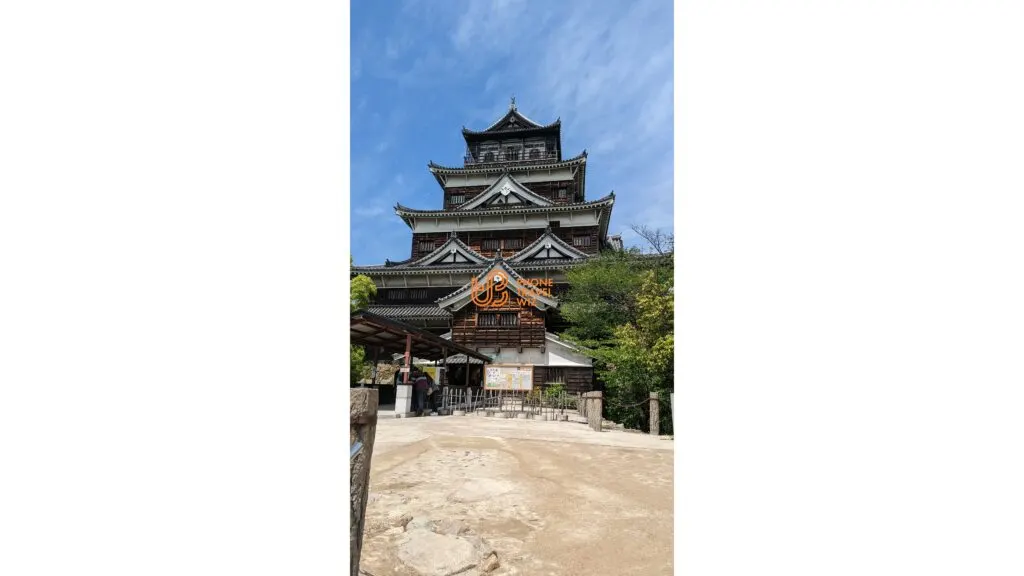
Including this cute variation of the castle.
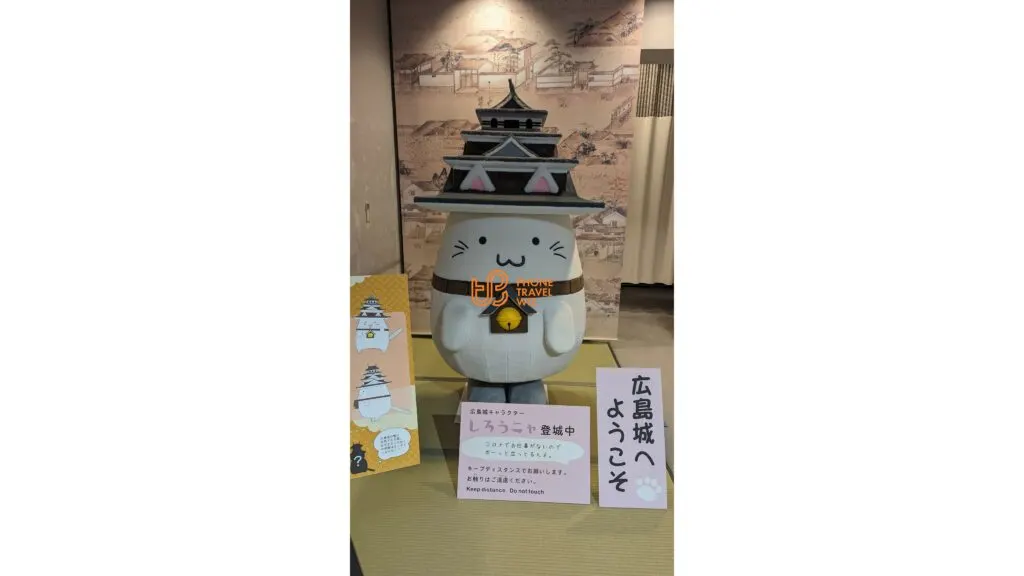
Hiroshima on its own is worth visiting, although it can be a nice day trip or weekend getaway if you are in the Kansai region (Osaka) already.
While Hiroshima may or may not be among the ten largest cities in Japan (it used to be until the 2010 census – that is when it fell out of it), 5G NR was somehow not available in the city.
COMST Japan, an NTT Docomo Mobile Virtual Network Operator (MVNO), and Ubigi Japan, using the NTT Docomo network, both have 5G NR access.
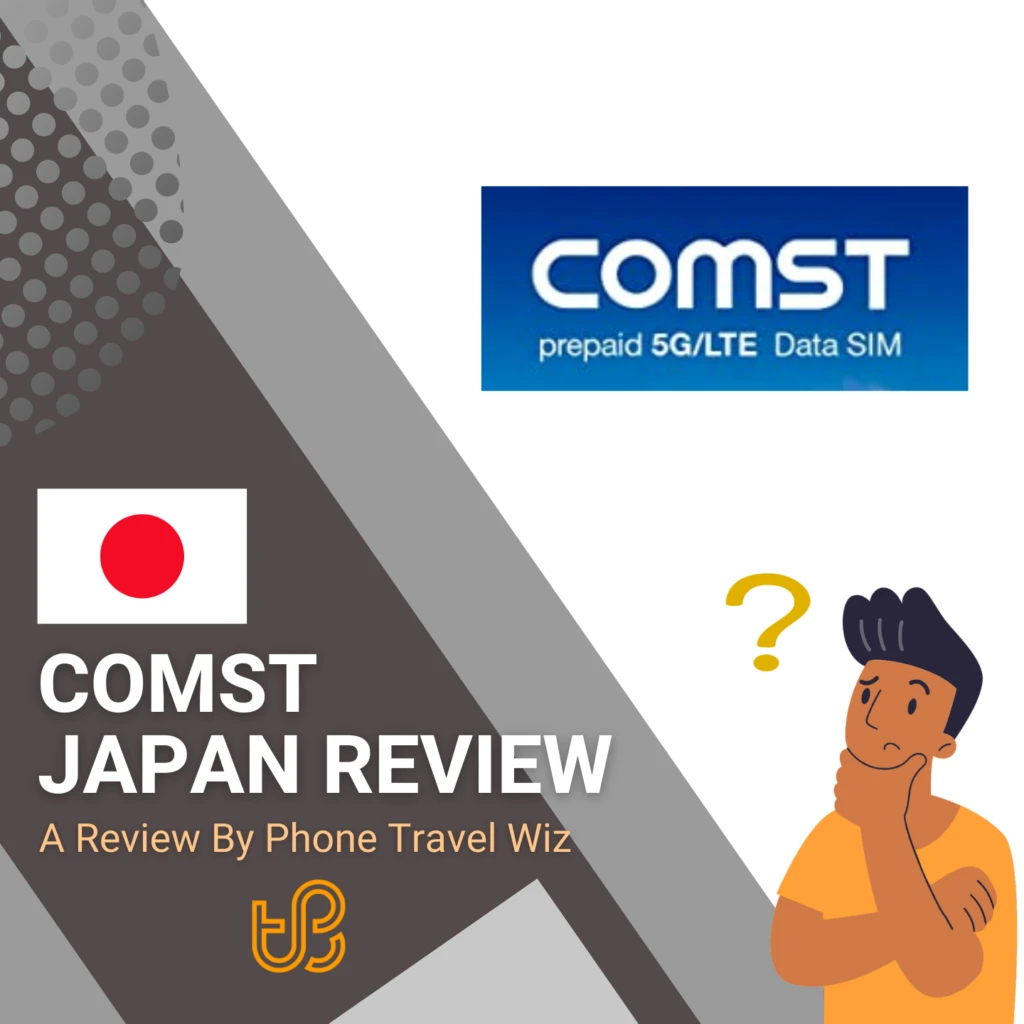

However, that technology was nowhere to be found throughout Hiroshima.
As a result, it was a leveling playing field to compare all the Japanese SIM cards and travel eSIMs I used because they all were on 4G/LTE.
For now, let's see how the Holafly Japan eSIM performed in Hiroshima:
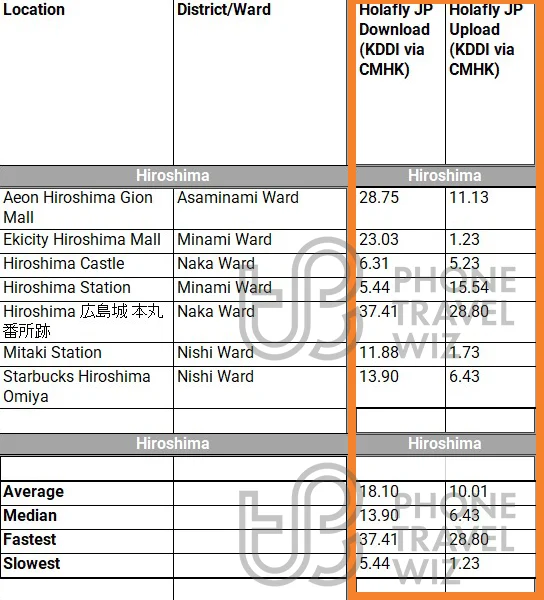
Poor speeds with the Holafly Japan eSIM in Hiroshima.
But… how is an average download speed of around 18 Mbps and a median speed of 13 Mbps poor?
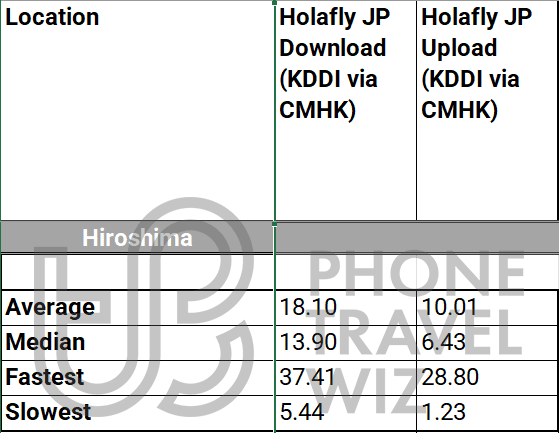
I compare the median download speed of a local SIM card or travel eSIM with the global median download speed of the month.
I consider the speeds poor if slower by more than 10 Mbps than the global median.
Yes, I have strict requirements over here 😤.
The global median was 42.07 Mbps in April 2023, as per the Speedtest Global Index, and the Holafly Japan eSIM was slower by more than 10 Mbps (29 Mbps, to be exact).
Moreover, you need a download speed of more than 25 Mbps to video stream content @ 4k resolution.
While you may not stream content at such a high resolution, it is still a good benchmark to see if a SIM card or eSIM is fast enough.
Else, I would have very high requirements of more than 100 Mbops because I am all about speed 🐆.
Now, I understand that I did not get as many results in Hiroshima (seven), making the sample size extremely small.
And that is true – I got more than 30 results in both the Kansai region and Tokyo Metropolis so that more representative analysis can be done.
Unfortunately, Hiroshima was a day trip and was not part of the Kansai region as I initially expected it to be.

So I could not group it with the Kansai region results because… well… it is not part of that region 🗿 (it is part of the Chugoku region instead).
So my apologies – we gotta deal with that I have right now.
None of the Japanese SIM cards or travel eSIMs I tested in Hiroshima primarily used the AU by KDDI network.
eSIMs by Japan Wireless are also on the AU by KDDI network (also through China Mobile Hong Kong, interestingly enough), but I only used it in Tokyo Metropolis.
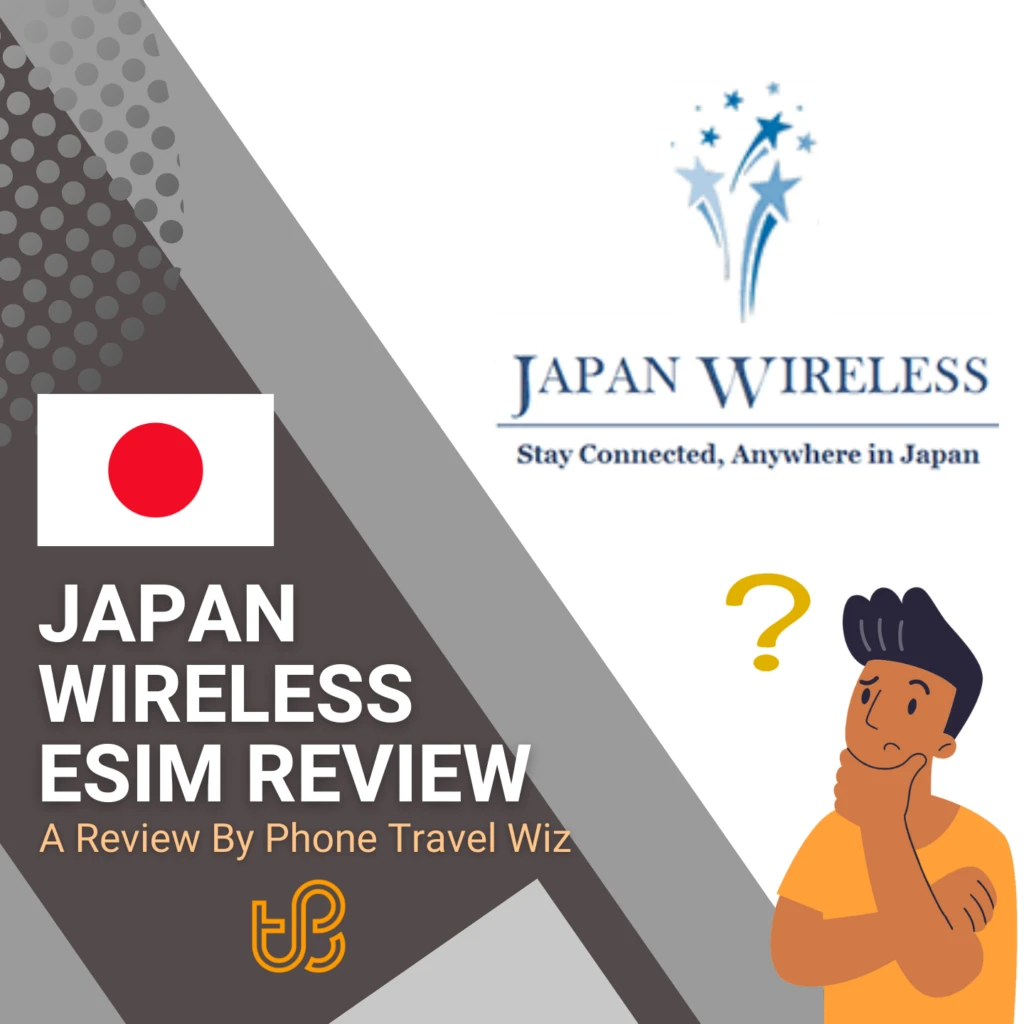
And Airalo's Moshi Moshi and Asialink eSIMs use AU by KDDI as a secondary network (Softbank is the primary network), and I do not recall ever being on AU by KDDI at any time in Hiroshima (or anywhere else in Japan, for that matter).
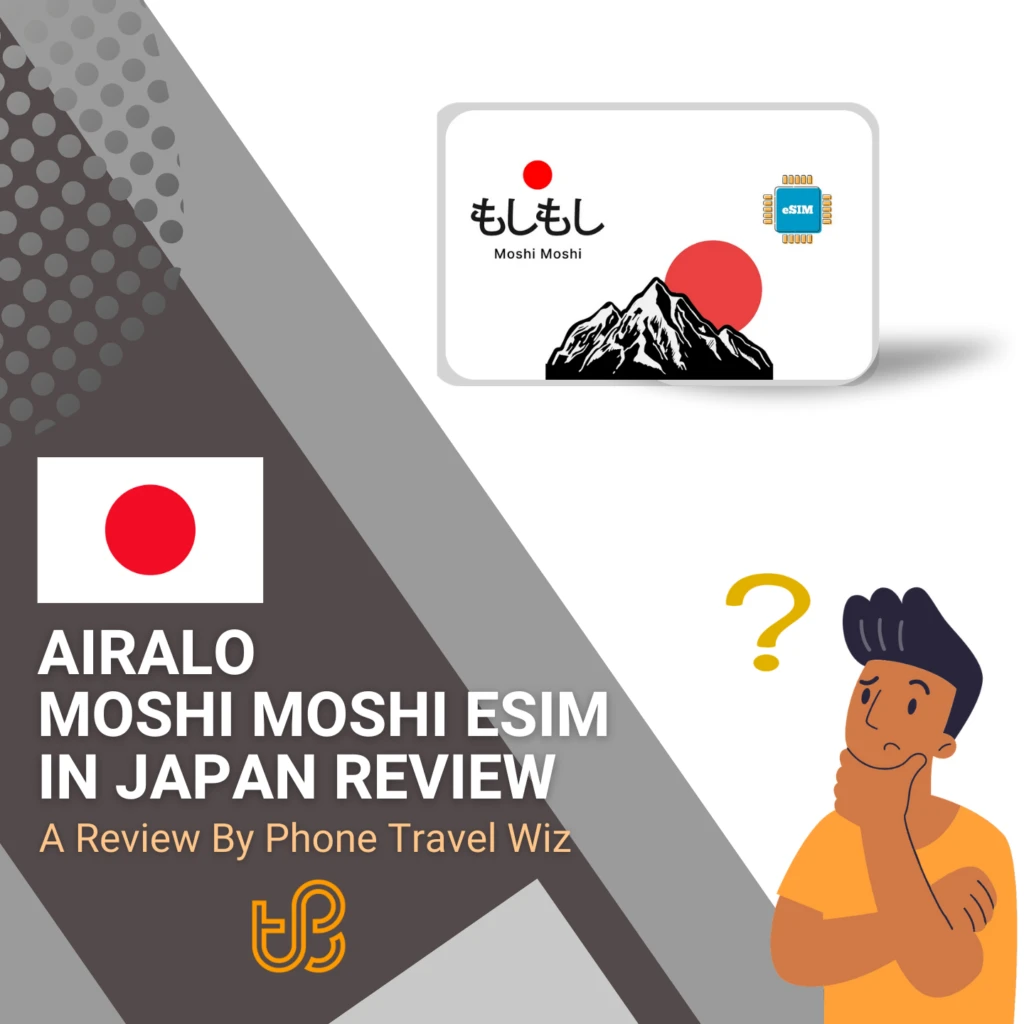
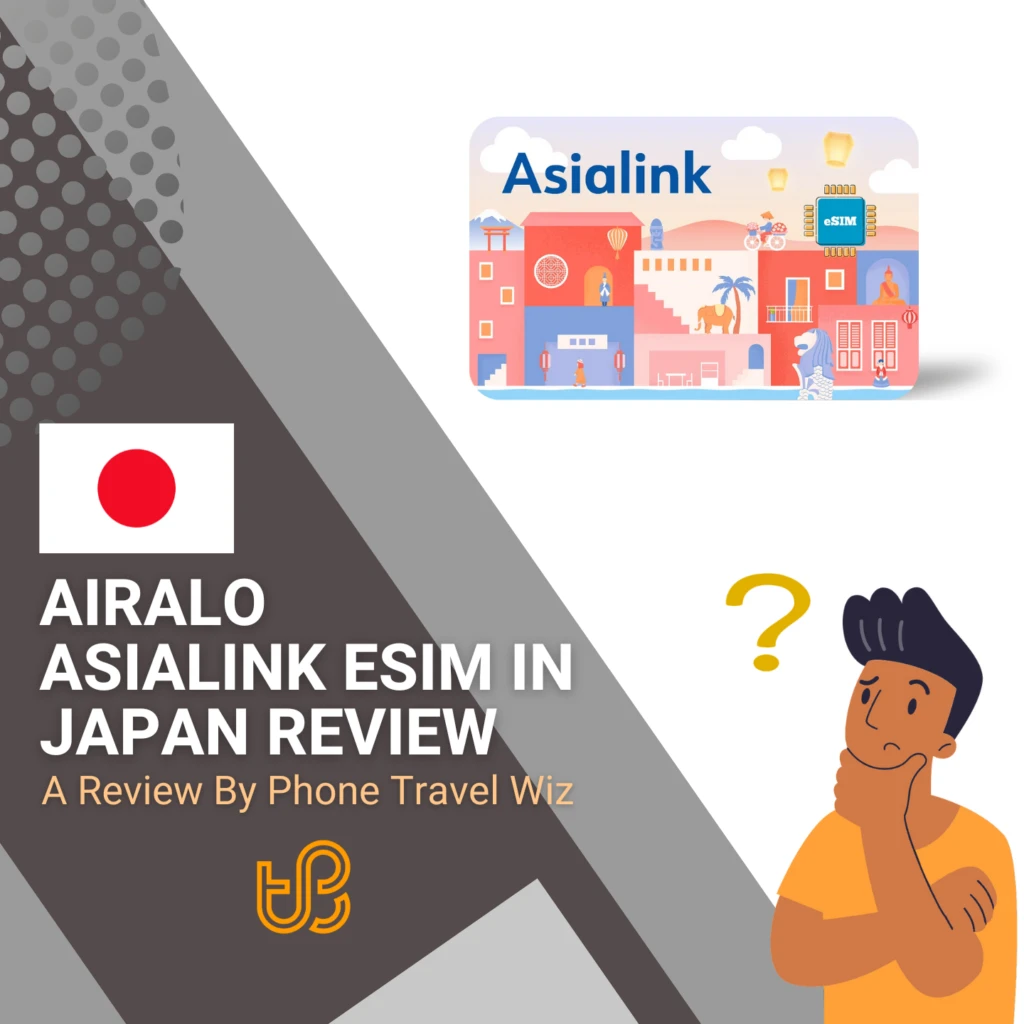
So I will just compare its results with the other travel eSIMs I used.
The best-performing eSIMs in Hiroshima were the Airalo eSIMs (Moshi Moshi and Asialink), with average download speeds of 67.46 and 62.76 Mbps, respectively.
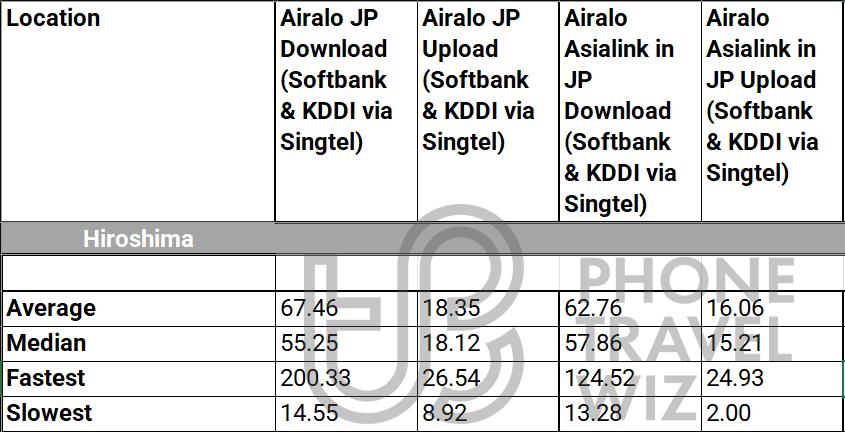
In fact, the fastest download speed I got in Hiroshima was with the Airalo Moshi Moshi eSIM – 200.33 Mbps at Hiroshima Station.
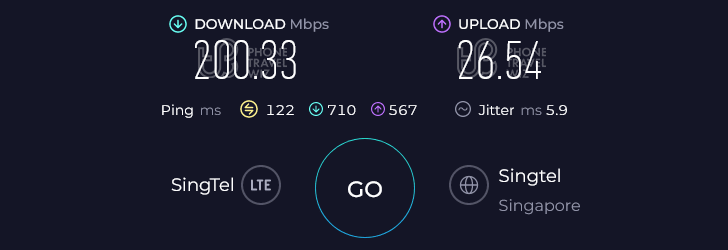
What is more disappointing is that the Holafly Japan eSIM had the second-worst average download speed in Hiroshima (with the Nomad Japan eSIM using Truphone (on the NTT Docomo network) being slightly slower – 16.99 Mbps).
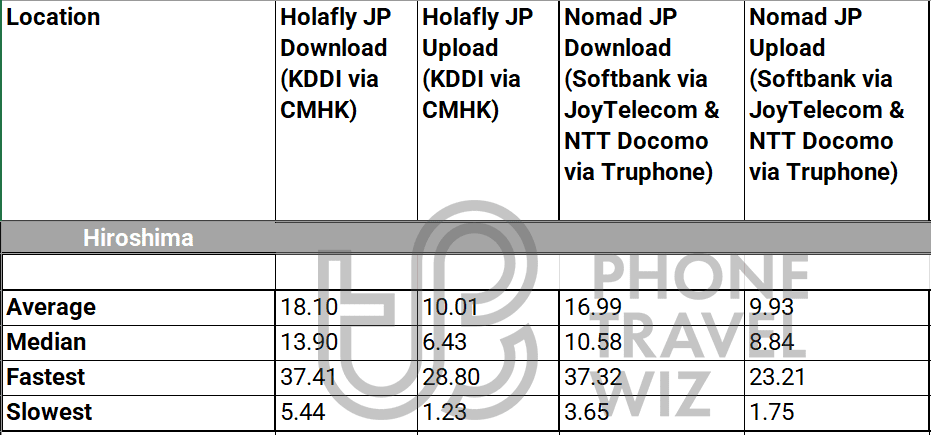
The upload speeds were not fantastic either (average upload speed of 10.01 Mbps), but that is good enough and faster than the Nomad Japan (NTT Docomo via Truphone), SimCorner Japan (M-AIR via NTT Docomo) & Ubigi Japan (NTT Docomo) eSIMs.
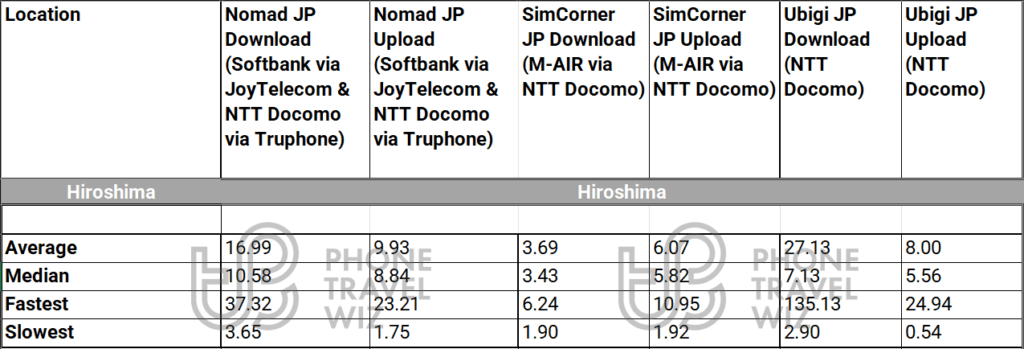
It was quite surprising that the Holafly Japan eSIM performed better than the Ubigi one because most of its results were on 5G NR… which should be faster than that 🤷🏿♂️ .
What the Holafly Japan eSIM did well was having the fastest upload speed of any Japanese SIM card or travel eSIM I tested at 広島城 本丸 番所跡 (a landmark in the park of Hiroshima Castle).
There, I got an upload speed of 28.80 Mbps – faster than the combined average of 16.35 Mbps.
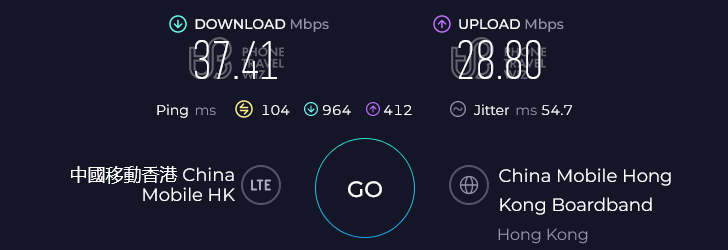
But besides that location, the Holafly Japan eSIM was slower than most other Japanese SIM cards or travel eSIMs I used in Japan, unfortunately.
>>> Get your Holafly Japan eSIM and use code “PHONETRAVELWIZ” for 5% off! <<<
Holafly Japan eSIM Speed Test Results in the Kansai region (Kobe, Kyoto, Nara & Osaka)
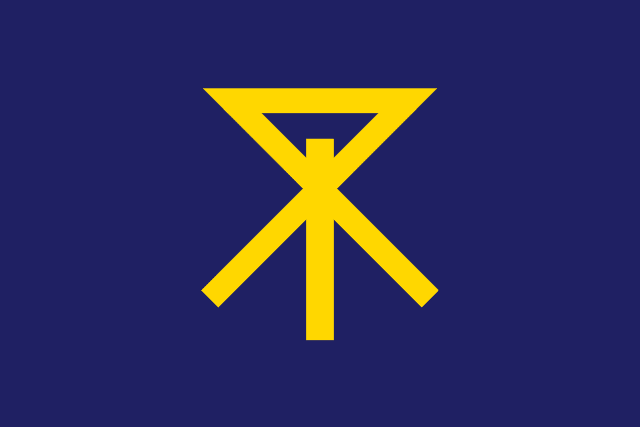
While the term Kansai region may not ring a bell for some readers, it is the second-largest region in Japan (behind the Kanto region, which includes Tokyo Metropolis).
The Kansai region is home to the famous Osaka but also Japan's former capital Kyoto.

And a few others like Kobe (yes – the one from Kobe Beef) and Nara (with the large deer park).
Most tend to stay in Osaka when they are in the Kansai region.
But I would highly recommend visiting one of the cities I mentioned earlier because (1) you are nearby and (2) they are worth the visit!
Osaka and the Kansai region was my first destination during this Japan trip.
Here, I learned that most Japanese SIM cards are slow.
And I could not contribute that to me being in some remote town… because Osaka is Japan's third-largest municipality (behind Tokyo and Yokohama (south of Tokyo)) and it has 5G NR (which I used with COMST Japan and Ubigi Japan).


As the Airalo Moshi Moshi eSIM is not powered by a Japanese mobile operator, I had a pleasant performance with it in the Kansai region.
In fact, it was the best travel eSIM I used in the region.
So, let's see how the Holafly Japan eSIM performed in the Kansai region:
>>> Get your Holafly Japan eSIM and use code “PHONETRAVELWIZ” for 5% off! <<<
Holafly Japan eSIM Speed Test Results in Tokyo Metropolis (Chiyoba, Shinjuku, Taito & Tokohama)

Tokyo, or the Tokyo Metropolis, probably does not need an introduction.
As you probably already imagining a bustling city with bright lights.
Which… it certainly is!

But do know that Tokyo consists of 26 cities (+a few towns and villages).
In fact, Tokyo Metropolis has 39 municipalities under its name.
This is why the heading for this section had Chiyoba, Shinjuku, Taito & Tokohama in parentheses because those are the cities I visited on this trip.
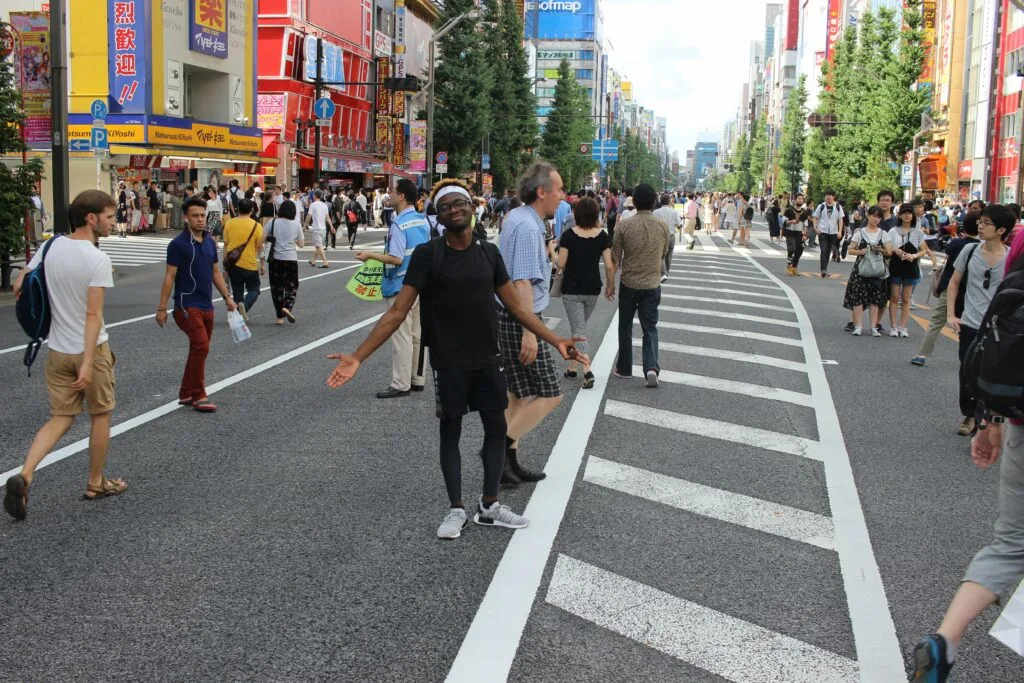
But wherever you go in Tokyo, you will have guaranteed fun 😄.

Let's see how the Holafly Japan eSIM performed in Tokyo Metropolis:
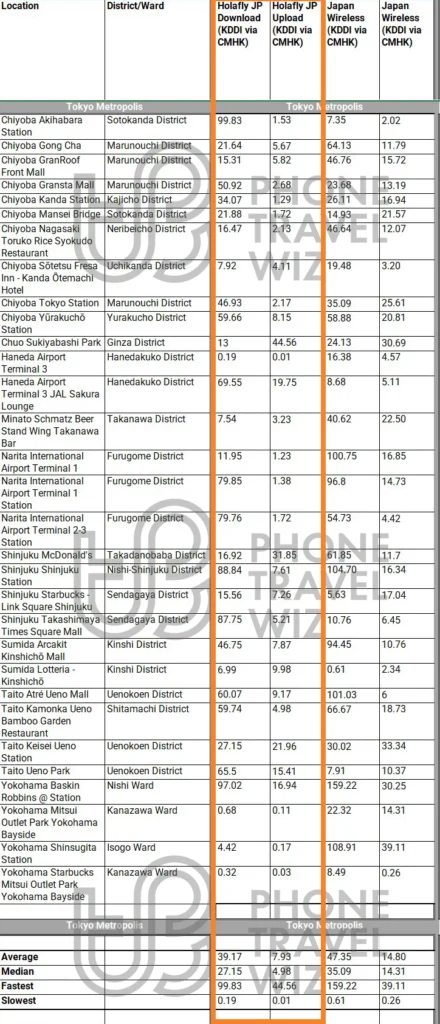
Decent speeds with the Holafly Japan eSIM in Tokyo Metropolis.
I had an average download speed of 39.17 Mbps and a median download speed of 27.15 Mbps with the Holafly Japan eSIM: it passed the 4K video streaming test in Tokyo Metropolis (minimum of 25 Mbps).
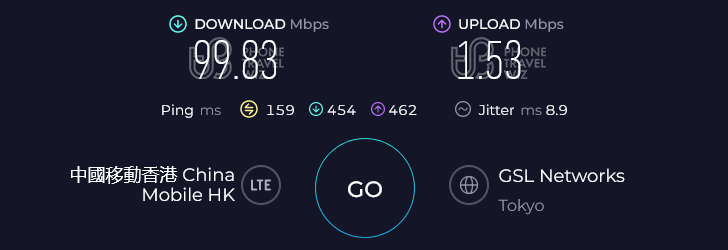
The same cannot be said for the HD live streaming test in Tokyo Metropolis – the Holafly Japan eSIM had an average upload speed of 7.93 and a median upload speed of 4.98 Mbps, making it fail the HD live streaming test (minimum of 10 Mbps).
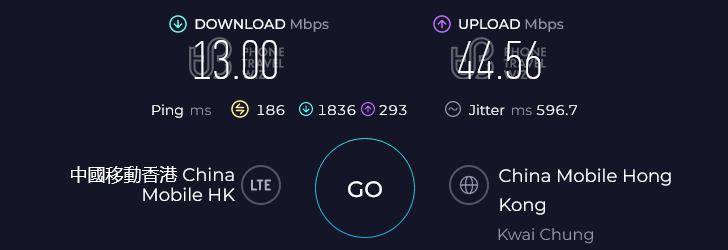
The fastest download speed with any Japanese SIM card or travel eSIM was only once with the Holafly Japan eSIM.
That was in Takashimaya Times Square Mall in Shinjuku City (87.75 Mbps).
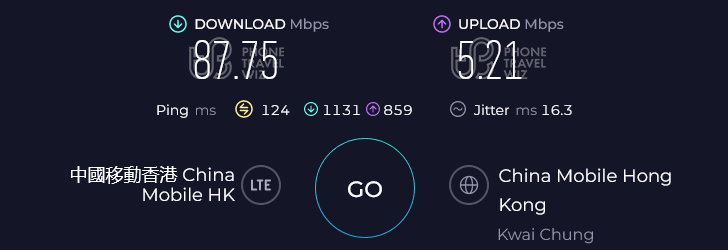
Yeah… that is kinda sad 🥲.
But… there is something interesting to mention.
I mentioned in the Hiroshima and Kansai region sections that no other travel eSIM (or Japanese SIM card) primarily used the AU by KDDI network.
Well, in Tokyo Metropolis, there was – Japan Wireless.

Japan Wireless is powered by China Mobile Hong Kong (ironic that a company with such a name is powered by a Hong Kong mobile operator 🤣) and also uses the AU by KDDI network.
The difference between the two offerings is that Japan Wireless has data caps (a hard cap or daily caps), while Holafly offers “unlimited” data plans.

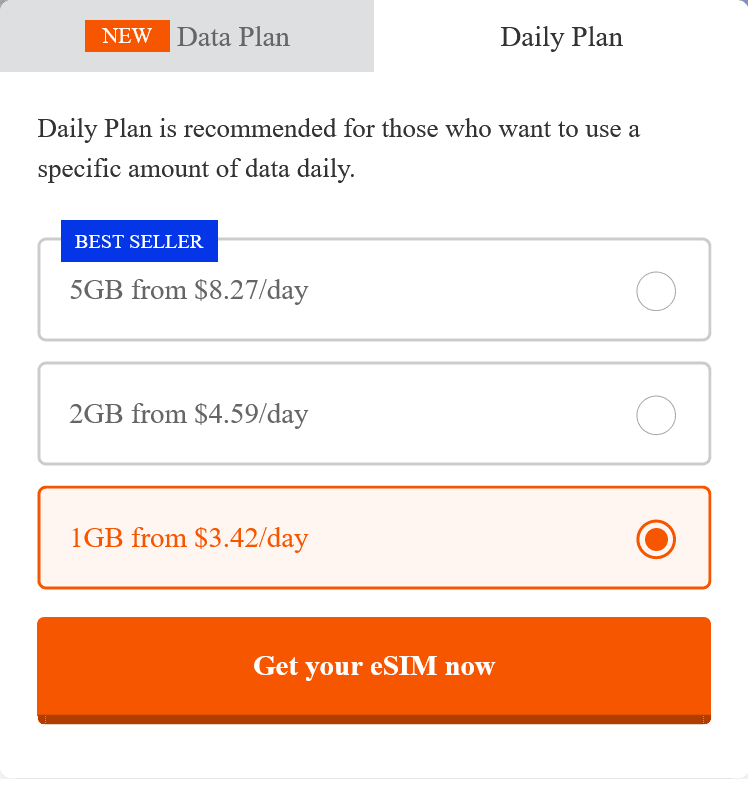
While powered by the same partner and on the same network, Japan Wireless performed better than the Holafly eSIM most of the time… while being cheaper!
So while the Holafly Japan eSIM had the fastest download speed at only one test location, the Japan Wireless eSIM was the fastest at four locations (within an acceptable range, unlike Holafly).
Even though the Holafly Japan eSIM was faster than the Japan Wireless eSIM at 16 of the 31 locations, the latter had better average and median download speeds (47.35 Mbps vs. 39.17 and 35.09 Mbps vs. 27.15 Mbps).
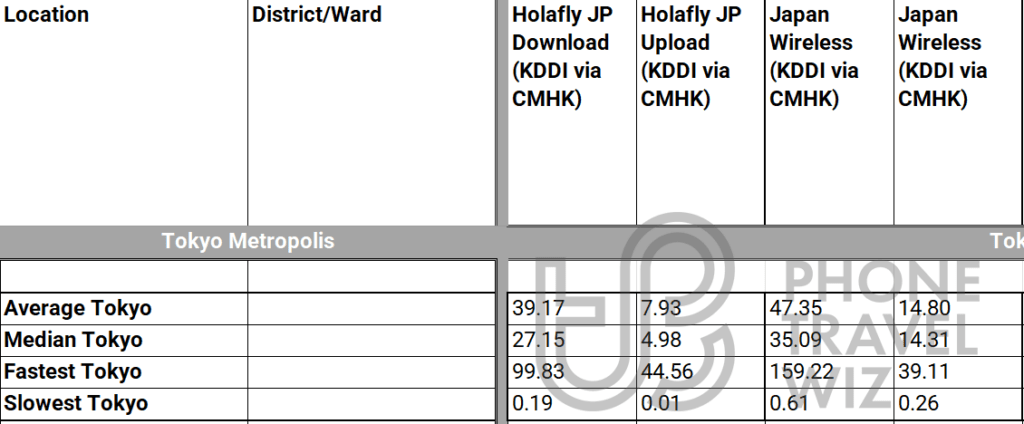
And I suspect this has to do with Holafly offering “unlimited” data plans while Japan Wireless does not.
So is an 8 Mbps difference a reason enough to go with Japan Wireless instead of Holafly? Not on its own.
But let's say you were to visit Japan for ten days and only use 1 GB per day; Holafly would charge 34 USD for ten days of service, while you can get 10 GB of data (for 30 days) for about 25 USD.

The difference is even crazier if you were to stay for 30 days.
30 GB of data for that length is available for about 43 USD from Japan Wireless.
Holafly? 64 USD.

And I did not mention that Japan Wireless' average download speed was almost twice as fast as Holafly's (14.80 Mbps vs. 7.93 Mbps).

Am I saying Holafly is terrible? Not at all.
But am I saying you can get better speed performance from another company using the same partner and network for (significantly) less? Absolutely.
Would I have known if I did not test these two eSIMs? No… so you are welcome 😜.
>>> Get your Holafly Japan eSIM and use code “PHONETRAVELWIZ” for 5% off! <<<
My Overall Experience with the Holafly Japan eSIM – Is It Any Good?
I would recommend the Holafly Japan eSIM, but it would not be one of my top recommendations for anyone wanting to buy a Japanese travel eSIM.
Getting the Holafly Japan eSIM, and any other Holafly eSIM for that matter, is easy and straightforward (even though I did not spend any time on how to install Holafly eSIMs – you will manage… promise!).
The Holafly Japan eSIM uses the AU by KDDI network, which has, together with its competitors, practically perfect 4G/LTE availability.

Many Japanese SIM cards I tested claim to have “unlimited” data.
But this often meant a certain amount of GB per day or up to 10 GB on a rolling three-day basis (which is new for me).
Some of these mobile operators mention this outright, while you have to look for this info with some others.
As mentioned earlier in this review, Holafly promised me that its plans would offer you truly unlimited data, only to discover that that was not the case (up to 90 GB per month).
Even after announcing their Fair Use Policy (FUP), some Phone Travel Wiz readers and travel content creator friends of mine have informed me that you can only use 1.5 GB to 3 GB per day before your speeds will be throttled.
And if you wonder why I am repeating this. It is because I advertised this “truly unlimited” data line for a month or two to readers like you. And it felt like I lied to you, which bothers me to this day. While I understand that truly unlimited is unheard of, I was promised it would be limitless by a former Holafly representative 😔 Nomad also has “unlimited” plans now, which is actually 2 GB/day. Not unlimited either, but at least they are upfront about it… unlike Holafly to this day with their undisclosed daily FUP.
At that time, I used its regular eSIMs with standard data allowances.
After they were launched, I visited countries that did not have unlimited data plans yet (Australia and New Zealand) before the messages started coming in.
So I just took Holafly's word… which I will not do anymore in the future 🗿.
Anyway, as soon as unlimited data plans were available for Japan, Holafly got rid of its data-limited plans.
It is unfortunate for those who know they do not use much data.
On the other hand, you do not have to worry about hitting a limit or purchasing top-ups to stay connected (even though topping up is impossible with Holafly at the moment).
Even then, Holafly could have been like Nomad, where the user can choose whether they want data-limited plans or “unlimited” plans.
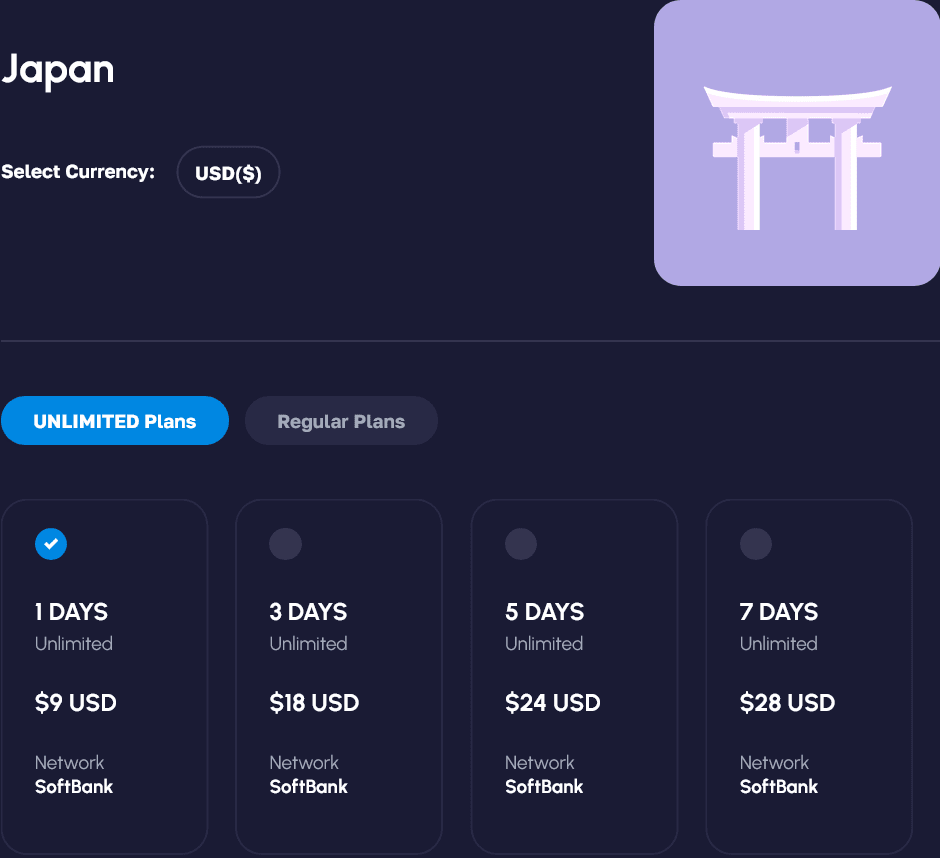
Ah well – it is not my business 🤷🏿♂️.
While your speeds with the Holafly Japan eSIM will often be fast enough for general data browsing and video streaming, you should not expect too much.
Taking all 91 speed tests into account, I had an average overall download speed of 39.17 Mbps and a median download speed of 27.15 Mbps with the Holafly Japan eSIM.
When looking at upload speeds, I had an average upload speed of 7.93 Mbps and a median upload speed of 4.98 Mbps with the Holafly Japan eSIM.
And these results are acceptable – nothing wrong with them.
Although speeds were significantly slower in Hiroshima for some reason (18.10 Mbps average download speed).

Every other travel eSIM, besides Nomad Japan (Truphone-powered), was significantly faster.
But none of them were on the AU by KDDI network… so that could have been it 🕵🏿♂️.
It was still the slowest when comparing Holafly's results with its peers.
Ubigi Japan was the best performer, but that is because it has 5G NR access.

But… if you want the same (or actually better) experience as Holafly (on AU by KDDI powered by China Mobile Hong Kong) for lower prices, you may want to consider Japan Wireless' eSIMs.

But if “unlimited” data appeals to you, you do not care about (extremely) fast speeds & do not mind paying a slight premium for these features, the Holafly Japan eSIM will do you well.
By using an extensive 4G/LTE network, offering reasonably priced data plans, and fair download speeds, you should have a smooth browsing experience with the Holafly Japan eSIM.
>>> Get your Holafly Japan eSIM and use code “PHONETRAVELWIZ” for 5% off! <<<
- Interested in using a Holafly eSIM in another country or countries? Check out my Holafly eSIM reviews from across the world!
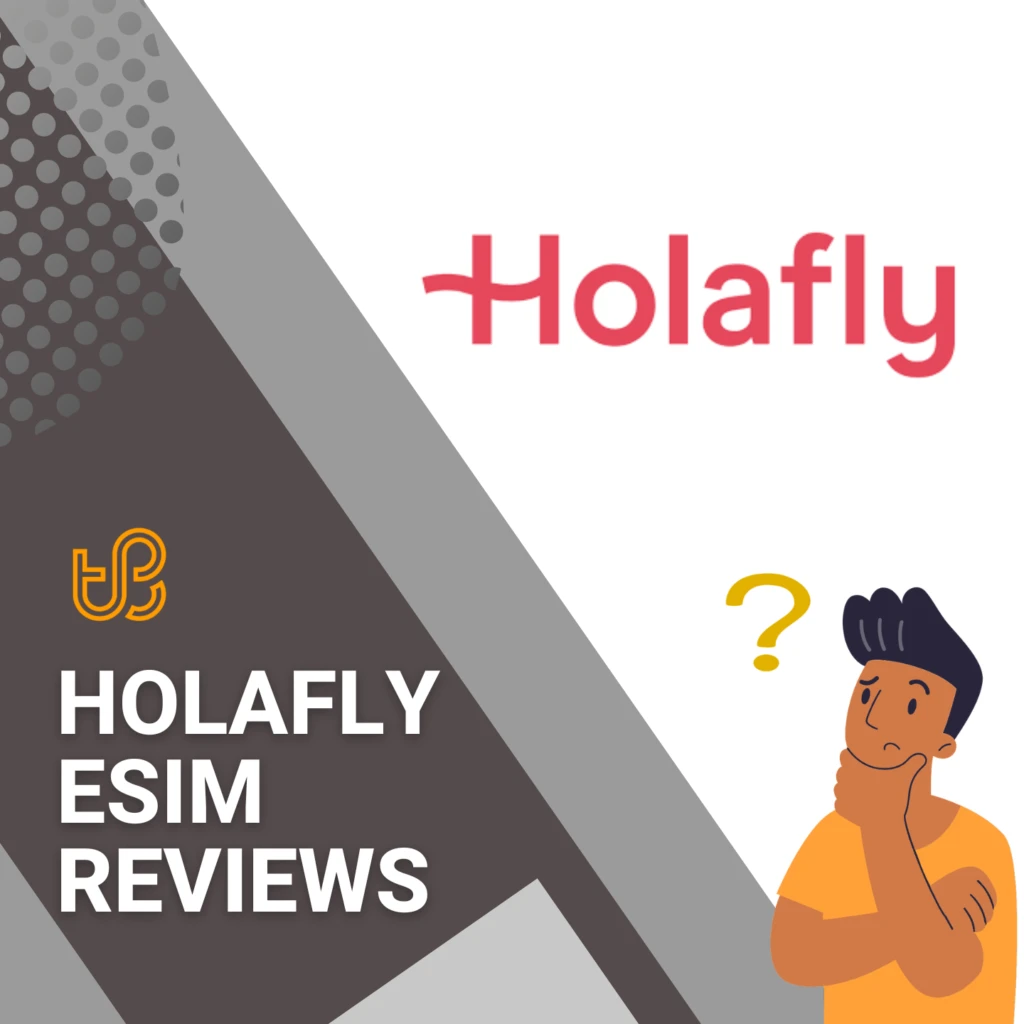
Other Japanese eSIM Reviews (Airalo, Japan Wireless, Nomad, SimCorner & Ubigi)
As mentioned earlier, I also tried out (other) eSIMs from Airalo (Moshi Moshi, Asialink & Discover Global), Japan Wireless, Nomad (Japan and APAC), SimCorner & Ubigi.
You should read those reviews too.
>>> Airalo Moshi Moshi eSIM in Japan Review | Airalo Asialink eSIM in Japan Review | Airalo Discover Global eSIM in Japan Review | Japan Wireless eSIM Review | Nomad eSIM in Japan eSIM Review | Nomad APAC eSIM in Japan Review | SimCorner Japan eSIM Review | Ubigi eSIM in Japan <<<
- Check out my eSIM reviews page if you want to read all the other eSIM reviews I have written, including other eSIM providers in Asia.
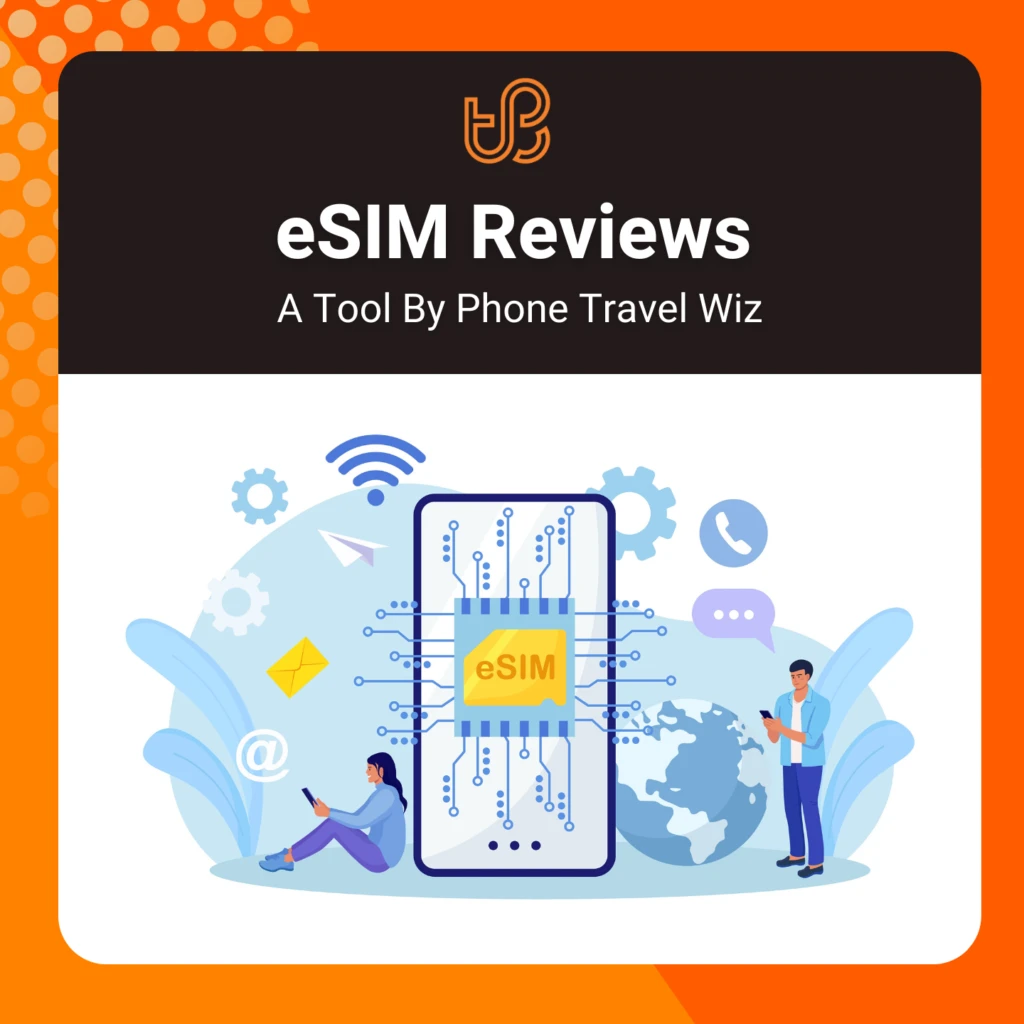
I also tried out various local Japanese cards: AnyFone Japan, COMST Japan, Mobal, Nippon SIM, Sakura Mobile, Tourist SIM for Japan, Wireless Gate Japan + TrueMove H Asia Travel SIM Card (from Thailand).
If your phone does not support eSIM (but felt like reading this Airalo review in full anyway – awesome) or want to have the best network experience possible, you want to go directly with the local mobile operators instead of roaming on their networks (as you do with travel eSIMs).
So I encourage you to read the Japanese SIM card reviews too.
>>> AnyFone Japan Review | COMST Japan Review | Mobal Review | Nippon SIM Review | Sakura Mobile Review | Tourist SIM for Japan Review | Wireless Gate Japan Review | TrueMove H Asia Travel SIM Card Review <<<
Check out my reviews page if you want to read all the other reviews I have written, including other Asian SIM cards.




